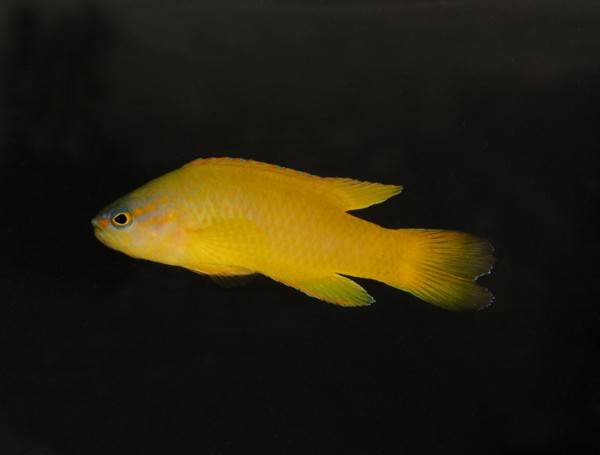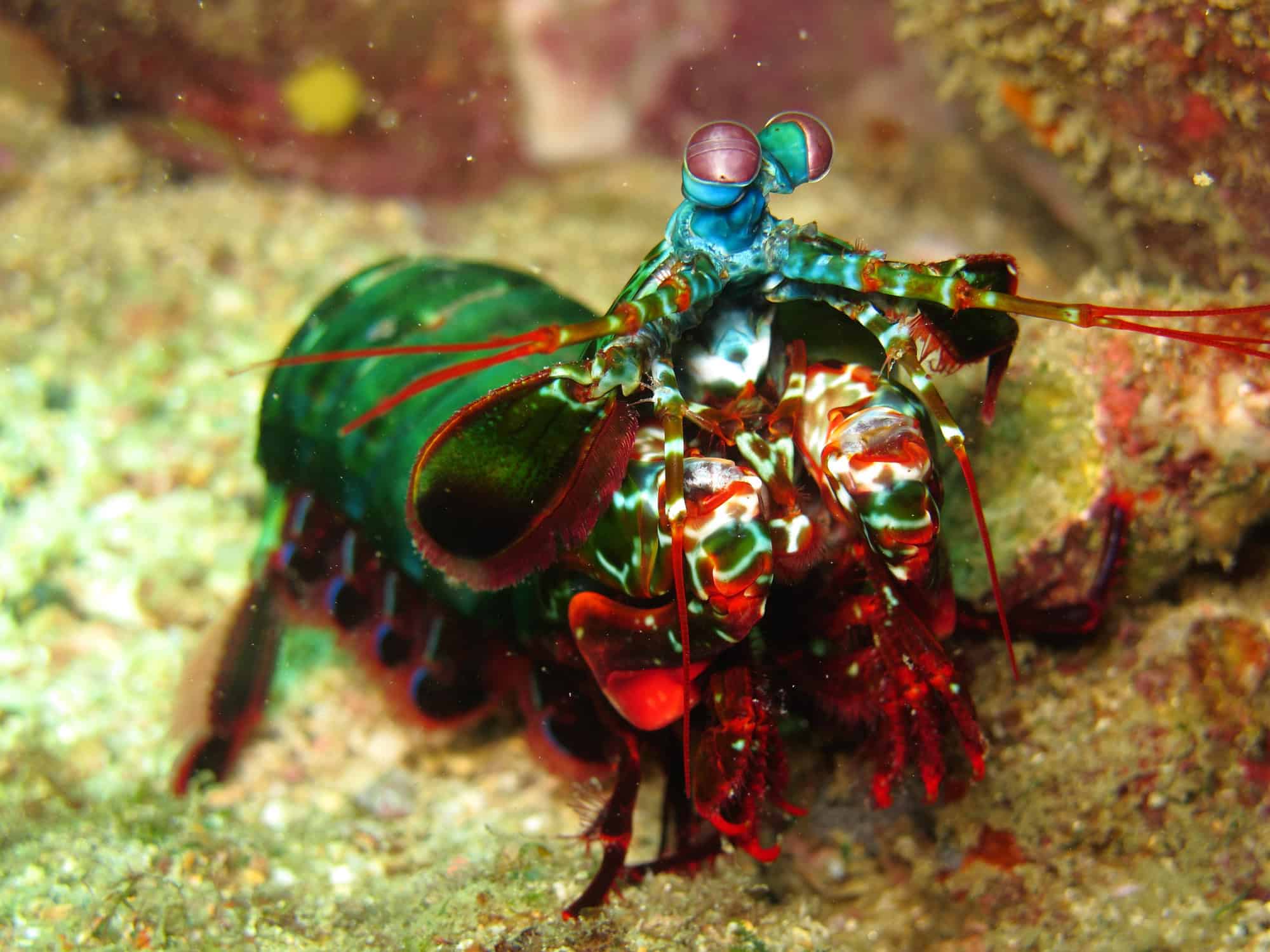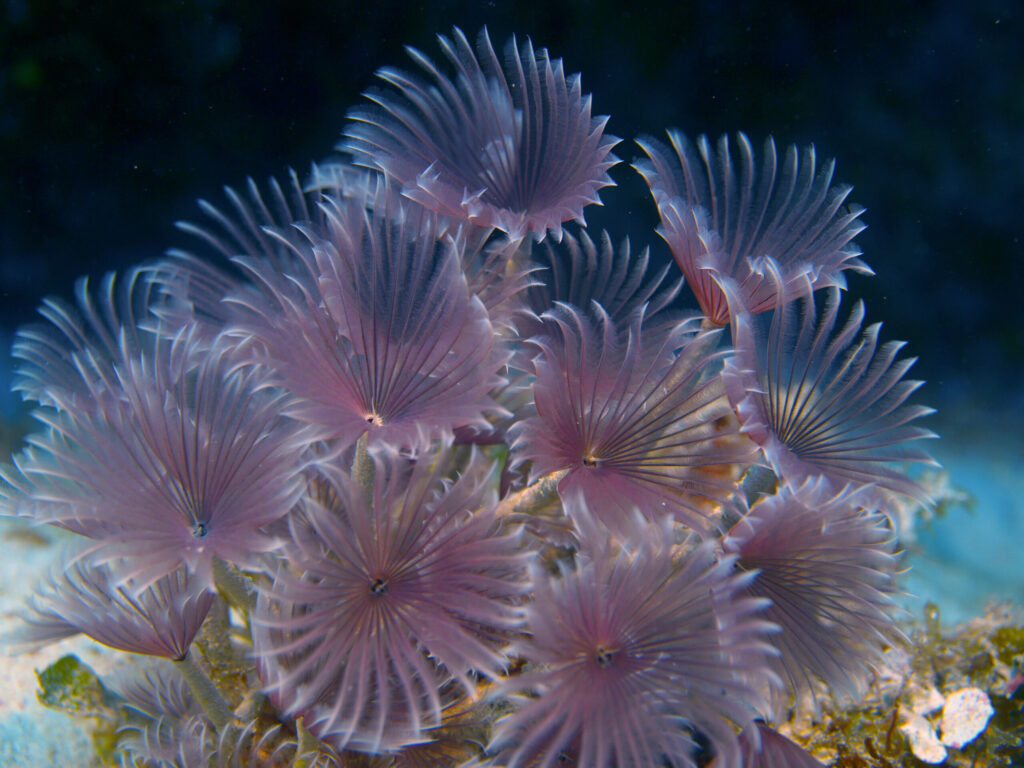The Golden Assessor, Assessor flavissimus, has always been something of an oddball fish, not only because of its beautiful coloration, but due to the behavioral differences that it gladly presents in home aquariums. A member of the basslet family, these shy fish spend a lot of their time hovering in caves and recesses in rockwork, but unlike most cryptic fish, they have a propensity for spending time completely upside down. To me, this strange behavior is more than enough to earn them a place on my stocking list!
These strange, cryptic beauties are a beautiful addition to many reef tanks. With an eye-catching yellow glow, they are sure to catch your eye, even when flitting around in caves and overhangs. Looking closer, you’ll see that the dorsal and anal fins have a subtle red lining around the edge. Coupled with the blue and orange bandit striping that streaks through the eyes, the color combinations are sure to stun.
Color and size
One thing that I love about the appearance of these cryptic fish is that most of the time, yellow fish are simply that- yellow. Think of a yellow tang or coris wrasse. The assessors have some minute color details that really allow them to stand out! Physically, these fish stay fairly small, meaning that they can thrive in almost any tank. Online sources report sizes of anywhere from 2 to 3.5 inches, but in my experience, most individuals collected range from 2 to 2.5 inches, and grow pretty slowly.
Geographically, Assessors hail from the Western Pacific, being collected from Australia to the waters of Papua New Guinea. They tend to congregate in reefs, seeming to enjoy the numerous cave systems and overhangs that reef-building corals provide. One of the best things you can do to ensure health and happiness for them in your tank is to emulate this environment, providing plenty of hiding spaces and shady zones protected from the open chaos of the reef.
Captive breeding
These days, captive breeding initiatives have also opened up the option of purchasing a captive-bred assessor for your tank. Not only do captive-bred fish have less of an adjustment when being introduced to your tank, but your purchase helps to support the growth of the captive breeding industry if you choose to go that direction!
In the wild, these basslets are found singly, in pairs, or occasionally in small groups. However, in captive life, it is typically recommended that you add a single individual per system– in close quarters, they can be known to show some aggression towards one another. Many keepers would love to keep a pair, but unfortunately, with a species not showing any signs of sexual dimorphism, creating that pair is near impossible and certainly not worth the risk to both fish.
Feeding
In captivity, these fish have earned their stripes and certainly can be called hardy- they aren’t overly chemically sensitive, are almost always very peaceful, and don’t have any tricky dietary requirements. Being planktivores, they’re likely to pick up just about any food that they encounter floating through the water column. Many times, I have had these fish try new foods right after acclimation, and it’s not unusual for them to pick up on eating a diet entirely made up of dry flakes or pellets.
If you like what you’re learning about the Golden Assessor, I don’t blame you! Keeping one can be a true delight. Finding one to add can be a bit of a challenge, but most local reef stores can get them in for a customer who asks nicely! As always, I recommend you do your due diligence with research and observation before purchase, but I can ensure it will be worth it. Take your time, care for your fish, and happy reefing!




